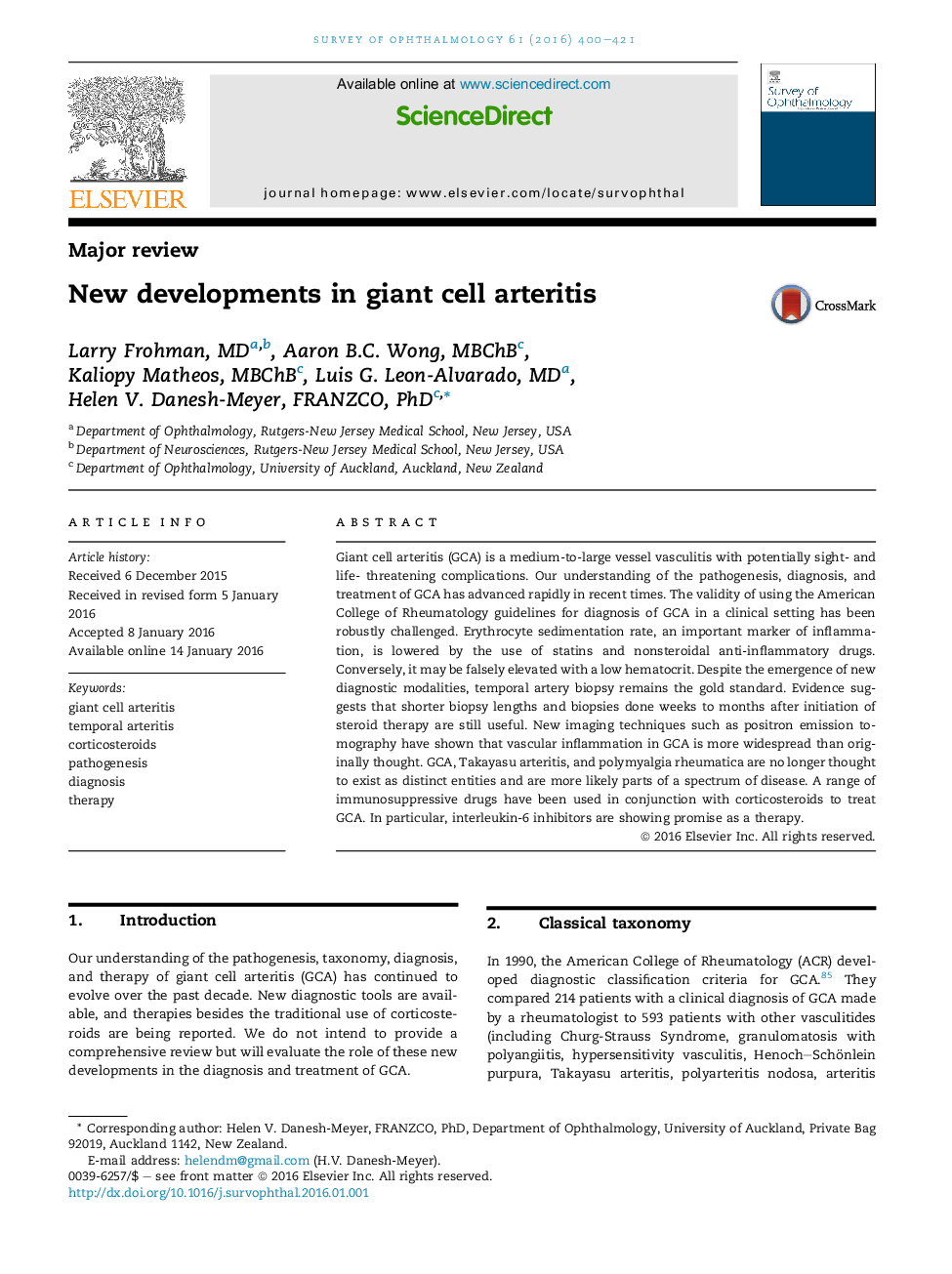| Article ID | Journal | Published Year | Pages | File Type |
|---|---|---|---|---|
| 4032422 | Survey of Ophthalmology | 2016 | 22 Pages |
Giant cell arteritis (GCA) is a medium-to-large vessel vasculitis with potentially sight- and life- threatening complications. Our understanding of the pathogenesis, diagnosis, and treatment of GCA has advanced rapidly in recent times. The validity of using the American College of Rheumatology guidelines for diagnosis of GCA in a clinical setting has been robustly challenged. Erythrocyte sedimentation rate, an important marker of inflammation, is lowered by the use of statins and nonsteroidal anti-inflammatory drugs. Conversely, it may be falsely elevated with a low hematocrit. Despite the emergence of new diagnostic modalities, temporal artery biopsy remains the gold standard. Evidence suggests that shorter biopsy lengths and biopsies done weeks to months after initiation of steroid therapy are still useful. New imaging techniques such as positron emission tomography have shown that vascular inflammation in GCA is more widespread than originally thought. GCA, Takayasu arteritis, and polymyalgia rheumatica are no longer thought to exist as distinct entities and are more likely parts of a spectrum of disease. A range of immunosuppressive drugs have been used in conjunction with corticosteroids to treat GCA. In particular, interleukin-6 inhibitors are showing promise as a therapy.
